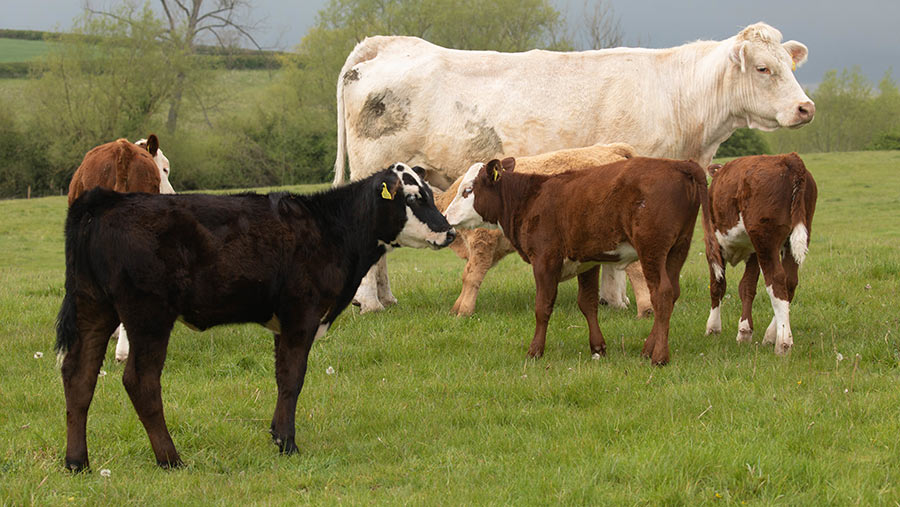Study shows financial impact of crypto in beef herd
 © Tim Scrivener
© Tim Scrivener Cryptosporidiosis in young calves causes significant long-term weight loss and incurs huge economic costs, according to a study carried out in Scotland.
The study, at Moredun Research Institute and The Roslin Institute, found that calves infected with Cryptosporidium parvum weighed 34kg less than healthy animals at six months.
Economic evaluation calculated the reduced weight gain led to direct financial losses of £130 a calf at sale.
See also: How to reduce the risk of abortions in cattle
The disease causes profuse watery diarrhoea mainly in calves under three weeks old, resulting in dehydration, depression and, in some cases, death.
Further costs were incurred from the increased feed that was needed to get calves to market weights, additional labour to look after sick animals and extra veterinary treatment.
The study
- Led by Hannah Shaw, the research looked at how the parasite affected long-term growth rates and assessed the impact on the efficiency of beef production.
- The study took place during the spring calving of 2017 on a commercial suckler beef farm in Scotland.
- The herd had a history of clinical cryptosporidiosis in neonatal calves.
- Calves were weighed at birth, and scored for severity of cryptosporidiosis every second day, until they reached 16 days old.
- Calves were weighed again at four, five and six months old.
- The results showed that calves, up to 16 days old, with severe cryptosporidiosis weighed 34kg less than a calf which showed no clinical signs of cryptosporidiosis.
- The direct cost was calculated to be about £130 an affected calf.
A spokeswoman for Moredun Research Institute said the research had underlined the damaging impact of the disease.
She added that the disease was difficult to control because there were no vaccines and only two licensed products in the UK to treat infection.
These treatments only reduce symptoms and shedding of the parasite in faeces, but will not cure the disease.
An infected calf will shed millions of parasite oocysts (eggs) into the environment, and transmission of the infection is mainly from calf-to-calf via just a few oocysts.
The oocysts have a tough outer shell and can survive in sheds, pasture or water for years, the spokeswoman added.
Beth Wells, of Moredun Research Institute, said: “Management strategies help reduce the impact of cryptosporidiosis.
“These strategies are important and should be applied to improve the health and welfare of cattle, increase production efficiency and reduce contamination of the farm environment with infectious cryptosporidium oocysts.
“Further research is also required working towards a vaccine to prevent this disease.”
